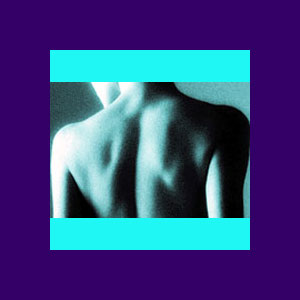
Upper back muscle pain is often felt in the rhomboid, trapezius, infraspinatus or latissimus dorsi muscles. There can be numerous reasons for muscular upper back symptoms. Sports injuries, car accidents or falls can all contribute to pain in the upper regions of the back and the lower neck. Upper back pain will virtually always affect the ability to turn the head and use the arms. Muscular neck and back pain can be extremely agonizing, but rarely leaves lasting effects. Remember, muscles are very efficient at healing injury and should not suffer chronically unless they are affected by extreme trauma or significant repetitive strain scar tissue formation.
This essay examines the incidence of thoracic upper back muscle pain in both acute and chronic presentations.
Upper Back Muscle Pain from Thoracic Outlet
Thoracic outlet syndrome is a muscular impingement syndrome which is possible to suffer in the area where the neck meets the upper back. This area, called the brachial plexus, is a center of neurological and circulatory activity. It contains many nerve structures, as well as large and important veins and arteries. To further clarify the diagnosis, when the upper back muscles affect a nerve structure, this is called neurological thoracic outlet syndrome. This is by far the most common variety of the condition. When the muscles impinge on a blood vessel, the condition is called arterial or venous thoracic outlet syndrome.
The thoracic outlet diagnosis involves suspicion of the upper back muscles clamping down on some of these nerve or vascular structures, usually due to ongoing spasm. As far as what might source the spasm, this is a very case-specific criterion. In some instances, injury is blamed, while in others, the condition might be deemed idiopathic.
Ongoing oxygen deprivation can certainly cause these muscles to cramp up and pressure nerves or blood vessels. In many patients, this regional ischemia is related to a mindbody causation.
Muscle Pain Symptoms in the Upper Back
The main symptom of muscular upper back syndromes is certainly pain. The muscles of the upper back and shoulders can be very sore when damaged or oxygen deprived. The pain might be steady or come and go depending on the specific nature of the injury. The discomfort often escalates upon movement or in particular positions.
Pain is mostly reported in between the shoulders, unilaterally or bilaterally. Some patients have radiating pain running up or down the spine itself. A great number of affected patients demonstrate neck muscle symptoms, as well as recurrent headaches. Shoulder pain and even arm pain are possible side effects and may indicate the potential for neurological involvement.
Muscle spasm is relatively common in upper back injuries. Back muscle spasm is when the muscle contracts violently and uncontrollably, often debilitating the patient. Spasms can be agonizing in a large back or shoulder muscle. Worse still, any movement often sets off new waves of torture, so the patient is generally confined to bed until the cramping subsides.
Tight back muscles or regional stiffness are also common in the thoracic region. There might be a tense or straining feeling when the back muscles are used. Tightness is a common effect of inflammation and is usual after injury. However, in cases where no trauma has occurred, tight upper back muscles may simply be suffering ischemia, since this is a common expression of chronic oxygen deprivation, as well.
Upper Back Muscle Pain Guidance
I know that minor upper back injuries can hurt terribly. However, it is crucial to relax. The pain will go away. Just remember to get all injuries evaluated by your doctor or physical therapist to be sure there is nothing seriously structurally wrong inside your spine.
The more you obsess over the pain, the longer it will probably last. Try to let the pain condition run its course. Once you are over the critical first 2 days of spasm and pain, start to rehabilitate the muscles. Start slowly and be careful. Conservative movement will increase blood circulation to the muscles and accelerate healing.
I have injured my upper back muscles (especially the trapezius) many times. Martial arts is a high risk activity and has caused me to suffer a number of upper back strains and sprains. I have also aggravated these injuries by training too hard, too soon. I have learned to slow down a little when I get one of these muscle injuries now. I do not want to suffer a buildup of scar tissue that may be problematic as I get older.
One thing I do not do anymore is fear. I know that the pain will go away. The funny thing is that since I started to think this way, I have not suffered many pulled back muscles.
Remember that the mind can actually predispose the body to injury and pain. It can also help heal injuries and resolve upper back muscle pain symptoms. Never discount the mind when it comes to back or neck pain, since its role is vital to both the causative and curative processes.





